What is foam rolling?
Foam rolling (also known as “self-myofascial release”) is a form of self-massage that can be done at home using household items such as a foam roller, lacrosse ball, massage stick/rolling pin, or a tennis ball. This technique is widely used among athletes, trainers, physical therapists, and other healthcare professionals. The reason for rolling out certain muscles is to improve joint range of motion, increase blood flow to surrounding tissues, enhance joint flexibility, and relieve trigger points along aggravated or tight muscles. Foam rolling provides many benefits to those with and without injuries and could be a part of your rehabilitation program at Physiostation & Sports Injuries Clinic.
How do I foam roll?
The foam roller is usually placed on the ground, aligned so that it is running perpendicular to the muscle that is to be rolled. Lie down on the ground on top of the foam roller so there is pressure on one end of the affected muscle(s). Roll along the body towards the other end of the muscle, making sure to apply pressure all the way along area. Bring the roller back up to the starting position while maintaining the same pressure and repeat.
If you are using a massage stick or a rolling pin, you can often sit in a chair and perform the same self-massage technique without having to be on the ground.
A few common areas that need to be rolled out are:
Iliotibial (IT) Band:
- Lie on the foam roller in a side-plank position
- Place foam roller at the top of the outside portion of your hip
- Bring your other leg over in front of your body and hands on the floor for support
- Push your body upwards on the foam roller until it hits the top of your knee
- Slide back up to the top position and repeat
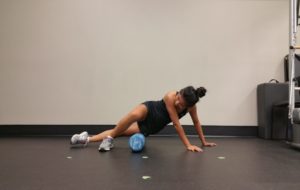
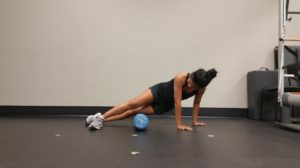
Glutes:
- Sit down on the foam roller and cross one leg over the other (in a Figure 4 position)
- Rotate your body to apply pressure on the glute of the crossed leg
- Roll from the top of your glute down to the bottom and repeat
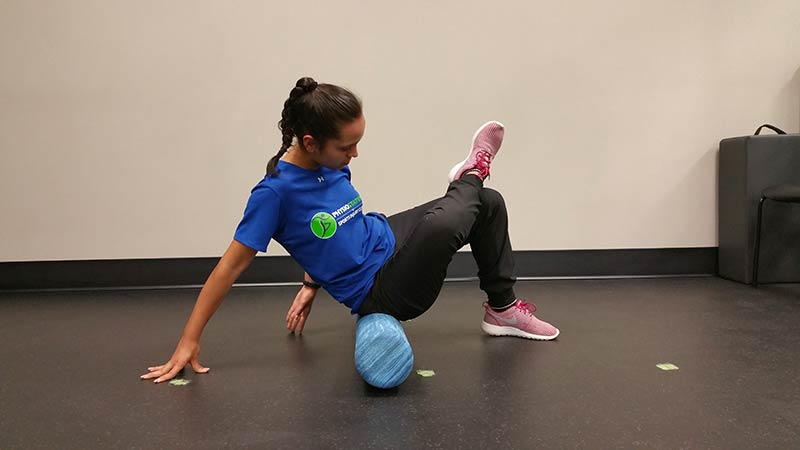
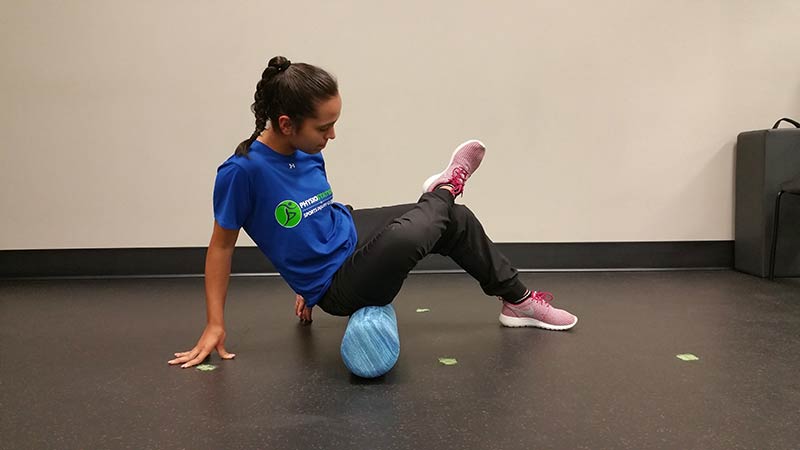
Quadriceps:
- Start in a front plank position (either on your forearms or just from your hands)
- Place the foam roller at the top of your leg just below your hip bone
- Crawl up with your hands or push with your other leg forward
- Roll down your leg up until you hit just above the top of the kneecap
- Repeat by pushing your body back up to the starting position
- You can do both quads at the same time or isolate one at a time for added massage
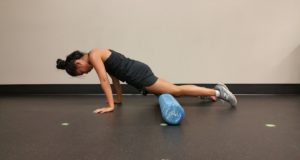
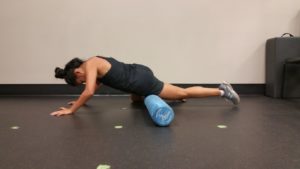
Hamstrings:
- Sit on the foam roller with the roller just below your glutes
- Crawl your hands back to roll from the base of your pelvis to the back of your knee
- Use your hands to crawl yourself back up to the starting position and repeat
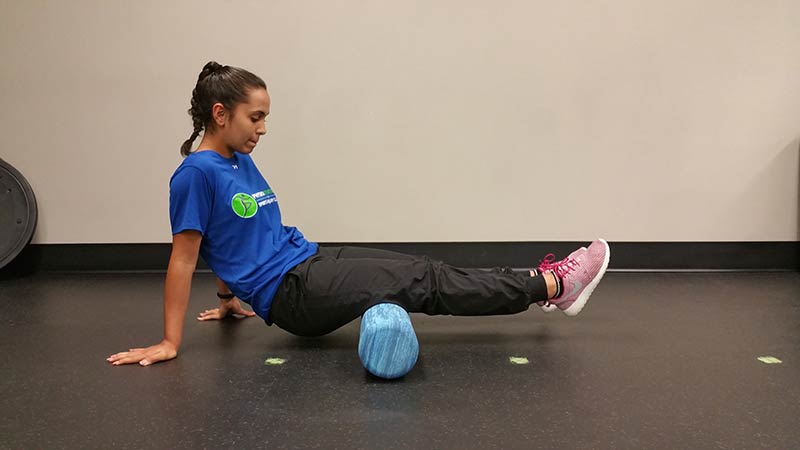
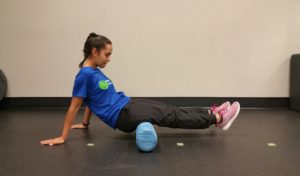
Calves:
- Place the foam roller just below the back of your knee where the muscle belly of your calf starts
- Crawl your hands backwards to roll all the way down towards your Achilles tendon (the tendon that attaches to your heel)
- Walk your hands back to the starting position and repeat
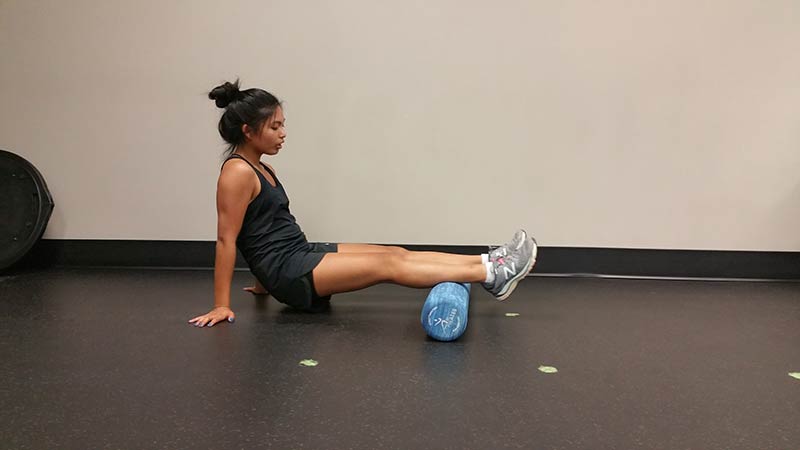
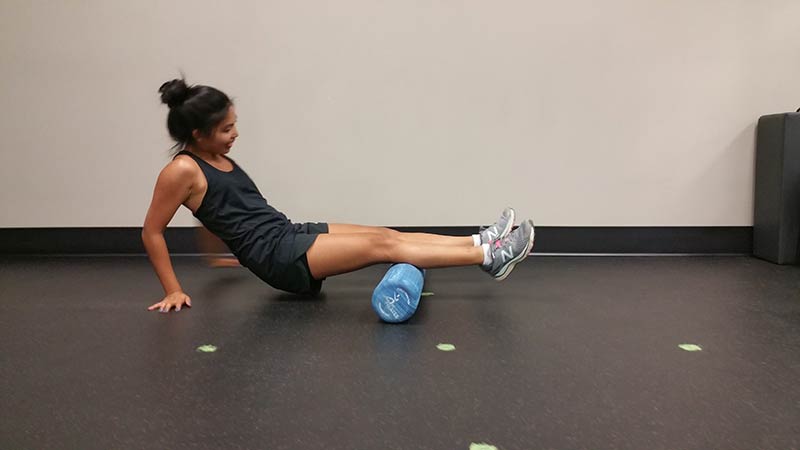
How often do I foam roll?
Generally, foam rolling large muscle groups (such as the quads, hamstrings, calves, etc.) can be done once or twice a day for 30 seconds up to a minute or more. The amount of pressure applied on the foam roller is up to your comfort level and amount of massage you want or can tolerate in a given area. Foam rollers vary in terms of softness and can range from being very foamy to very hard and stiff (for a deeper and more intense massage); therefore, it is best to try a few different types in order to get a foam roller that is suitable for your needs. Depending on the area being rolled out, this procedure can be a bit uncomfortable – but it should not be causing you any sharp or shooting pain when rolling.
When do I foam roll?
Foam rolling can be done before or after a workout/exercise session of any kind (or both!). It is also beneficial to foam roll when your muscles are feeling tight and sore, or when your physical therapist recommends it – such as part of your rehabilitation exercise program! After your workout, rolling out the main muscles used has been shown to decrease the incidence of muscle soreness post-workout by temporarily increasing blood flow to the rolled muscles. This increase in blood flow contributes to more rapid muscle restoration and healing post-exercise. Alongside some dynamic warm-up exercises, gentle foam rolling before working out has been shown to increase muscle flexibility without decreasing muscle force production. This means that you can still lift weights and move around normally during your workout with an increase in your joint range of motion.
Self-myofascial release aids (such as a foam roller or lacrosse ball) can be picked up at any sporting goods store and are great tools to use on a daily basis for many people, from athletes to those with acute injuries.
If you have any questions about foam rolling and its benefits, if rolling is suitable for you, or if you would like a personal review of a foam rolling exercise for your rehabilitation program set out by any of our physiotherapists, please contact us at 604.372.0808.